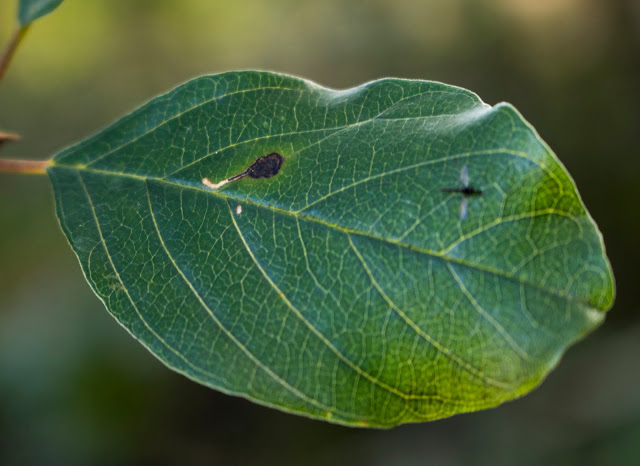I walked around the Ocean, anticlockwise, more slowly than the other day, and keeping an eye on as many trees as possible between the path and the lake.
Crack Willows
The first thing I thought was that at the southern end of the Ocean there is a lot of the Crack Willow, Salix fragilis (L.), the majority of the trees on the skyline. Mixed in were Ash, Grey Willow, Alders, Hawthorn, Blackthorn. The upperside of the Crack Willow leaves at this time of year are mid-green and quite glossy, with a whitish grey on the underside. The tip is quite acuminate, while the serrations on the margin are quite prominent, and somewhat uneven. The petiole is generally over 1 cm long, the twigs glossy but of variable colour, or there may be several different types present.
Crack Willow is a complex species aggregate, both in the UK and on the continent. There are many clonal variants, generally unisexual, and most of them are likely to have originated in the catchments and other areas from human activity of one sort or another. The taxonomy is very difficult. The leaves do seem to be a bit more subject to Willow Anthracnose, in comparison to the White Willow, Rusty Willow and Osiers covered below.
I was puzzled not to see obvious glands, usually figured projecting in odd shapes from the junction of the petiole and lamina.
White Willow
Salix alba appears generally to have smaller, neater, leaves obviously glistening white as they billow in the breeze. Close up it may be difficult to see the tiny hairs, except on the edges in profile, in with the minute serrations. The stems are initially silkily pubescent as well, going yellowish as they age. No stipules visible in September, and I didn't see any glands on the petiole.
Osiers
To the south and southeast, and again to the north there are good individual plants and patches of the Common Osier, Salix viminalis, L. One plant had very narrow smaller leaves, and could perhaps have been var. angustissima, but Meikle states that almost any plant will degenerate into this state if sufficiently neglected.
The shoots are generally upright, on what to me seem quite rounded bushes. The short indumentum covering the underside of the leaves and the stems and next year's buds is very attractive. On the stems the indumentum extends about half way down the current year's growth, making the younger stem a lovely silky dull green, but as it wears away, leaving a glossy green epidermis on the older stem. Last year's growth has an matt olive-brown bark covering it. The upperside of the leaves is a dull green, hardly lustrous at all. The revolute margins and the undulations are quite obvious. The underside of the leaves are silky grey with the thousands of tiny apressed hairs, and lots of small veins curving strongly towards the tip, which project downwards below the lamina, so leaving a tiny dip on the upperside of the leaves, and repeating the pattern along the incredibly long laminas. The leaves are often tattered and damaged, perhaps by leaf beetles and/or leafhoppers.
There are, but quite difficult to spot, very long, lanceolate, almost linear stipules. The canaliculate (not very obvious in September) petioles have large boat-shaped bases covering a large proportion of the bluntish woolly catkin-buds laid down for the following year, giving the string of pearls effect noted in the Collins guide. The indumentum of the stem is pierced by orange-brown stomata, generally with a central split.



















































